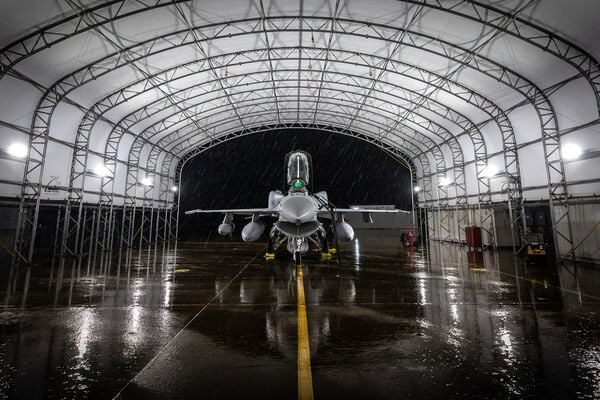
Lockheed Martin's proposal of the F-16V Block 70/72 aircraft to Thailand includes a highlight of the aircraft's extended service life, extended range (due to conformal fuel tanks), and new avionics such as the APG-83 AESA radar. (Lockheed Martin)
As Thailand moves towards a decision on acquiring new fighter aircraft, Lockheed Martin is highlighting the capabilities and longevity of the F-16V (Viper) Block 70/72 fighter aircraft as a fit for the Royal Thai Air Force's (RTAF's) operational requirements, a company executive said.
Thailand seeks to procure an initial batch of fourth-generation fighter aircraft to replace a squadron of ageing Lockheed Martin F-16A/Bs as part of its “fighter replacement project”, which is scheduled to run from 2025 to 2034.
Speaking to Janes on 24 July, Aimee Burnett, vice-president of business development for Lockheed Martin's Integrated Fighter Group, said that the company is proposing the F-16V Block 70/72 fighter aircraft for Thailand as the aircraft has “sustainment enhancements” and next-generation sensor capabilities. Lockheed Martin is also proposing a “tailorable” offsets package, Burnett added.
The core systems of the Block 70/72 aircraft include the AN/ALQ-254(V)1 Viper Shield electronic warfare (EW) system and the Northrop Grumman AN/APG-83 active electronically scanned array (AESA) radar. According to Burnett, the AN/APG-83 provides fifth-generation fighter radar capabilities by leveraging hardware and software commonality with Lockheed Martin F-22 and F-35 AESA radars.
The aircraft will also have “more than 3,300 carriage and release configurations that are certified for the F-16 from a weapon's perspective”, she added.
Lockheed Martin did not specify if it would offer a unique tailoring of avionics for systems for the RTAF.
Looking to read the full article?
Gain unlimited access to Janes news and more...







